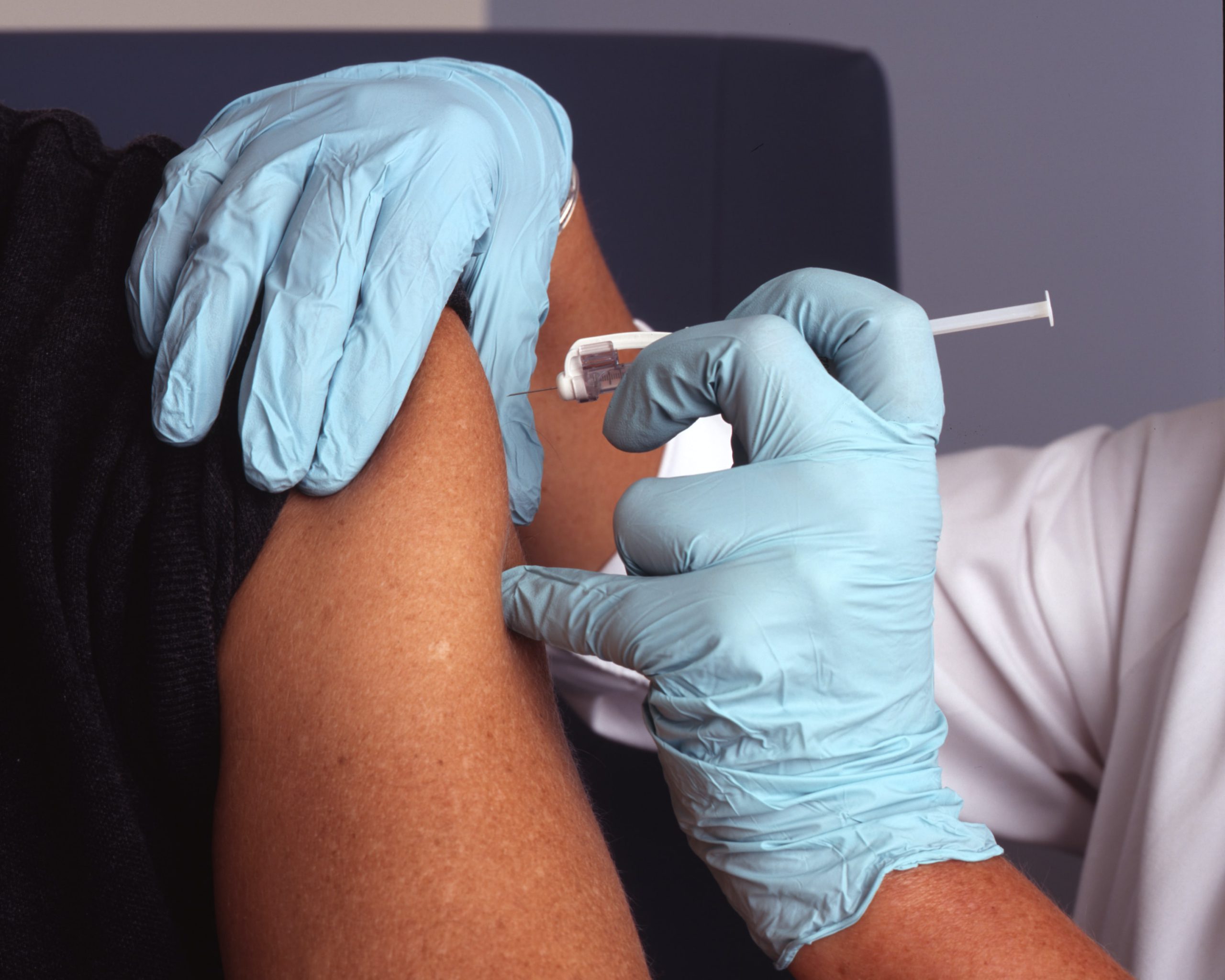Progression of the Medical Field & Our Role
Since the discovery of the smallpox inoculation by Edward Jenner in 1799, the medical field has advanced significantly and continues to develop at an exponential rate in the 21st century. Even with the current predicament of the coronavirus and set-backs that may be faced, the medical field will continue to grow in an effort to achieve affordable, accessible, and quality health care for everyone throughout the world. As such, this article evaluates the direction of the progress in the medical field and concludes with the role of the youth in assisting in the progress of this career.

BY ASHWIN BHASKAR
Ever since 1799, with the creation of the smallpox vaccine, further advancements have been made in the medical field with the aim of treating/curing infectious diseases and other ailments while also increasing our understanding of biological processes and the relationship between different parts of the body. Though much progress has been made in this area, we have only just begun to discover the keys to mysteries which have baffled scientists for centuries. Diseases such as cancer which previously marked a death sentence for the patient can now be effectively treated and in some cases even cured completely. Furthermore, maladies such as tetanus and polio have been effectively contained and mostly eradicated in the United States. The common denominator in all of these positive developments has been the presence of technology. Automation in the medical field has been present since the late 1500s with the invention of the first primitive microscope by Zacharius Jannssen. Over time, technology has become more and more advanced leading to increased efficiency in the work of medical researchers. The 21st century marks the zenith of mechanization in the medical field as inventions such as CRISPR and TALEN have helped scientists better understand the genetic makeup of certain disorders, a capability previously unavailable to them, while also allowing them to make alterations to certain defective genes and DNA sequences in order to better combat the illness. However, this is only the beginning. The field of medicine is progressing towards an increased reliance on technology, aimed not just with better treatment, but also with prevention and the development of long term cures.
As we move further and further into the technological age, researchers, doctors, and other members of the medical field have begun to further utilize these advanced resources at their disposal. Going forward, one invention in particular has the power to redefine the healthcare industry: Artificial Intelligence more commonly known as AI. AI has made great strides since its inception in the 1950s. Moreover, it has begun to appear in varying forms in a wide spectrum of technologies. Currently, AI along with natural language processing (NLP) and machine learning (ML) is primarily being used for collecting and organizing patient data. In addition, AI provides techniques to uncover complex associations which cannot easily be computed by a human. Despite the massive impact AI already has on this industry, it has yet to realize its full potential in the medical field. In the future, its primary purpose will likely be to generate a patient’s electronic footprint by preparing a list of a patient’s tendencies and habits by analyzing a patient’s clinical record. Employing this course of action will save a considerable amount of time while also allowing for quick implementation, a stark contrast to the tedious process a clinician must currently undergo. NLP and ML also have the capacity to increase the efficiency of pharmaceutical treatments and enhance patient engagement in their recuperation. In addition to providing more effective treatment options, AI will have a significant role in preventive medicine thanks to its ability to effectively monitor and reveal certain patterns/discrepancies in a person’s genetic code. Most important of all, artificial intelligence has the potential to play a huge role in diagnosing certain types of cancer. As these systems become better validated, they will surely be given more tasks to accomplish. However, it is important to establish a set of ethical standards for the entire health care sector to abide by. Precautions must be taken in order to ensure optimal function of the system and the safety of the patient. Nevertheless, the prospects for artificial intelligence is great and action must be taken in order to further implement this technology in the medical field.
Though artificial intelligence is considered to have one of the greatest impacts on the medical field in the future, it is not the only one. Another device that is likely to be relied upon is 3-D printing. 3-D printing was first introduced in the 1980s by Charles W. Hull with its intended purpose being to create prototypes for product development within certain industries. However, recently it has been adopted by medical professionals and is utilized on a small scale for surgical planning, predominantly in heart procedures. Additionally, only small structures such as splints can be made which are only sustainable for a couple of years. Though the jump to printing organs and blood vessels is much more complex, research is currently being conducted with promising results. According to Richard G. Ohye, M.D., professor of cardiac surgery at Michigan Congenital Heart Center, C.S. Mott Children’s Hospital, Ann Arbor, Mich, the studies currently being conducted involve “a printed matrix of biocompatible material, in which stem cells can then be deposited. If the process can be worked out to create engineered, printed organs, these might be used to create benchtop model organs for new drug testing in the next few years. Implantable 3-D printed living organs for transplant into human patients are also a very real possibility.”. Due to the promising results, it is likely that in a couple of years this process will be perfected and greatly beneficial to doctors and more importantly patients requiring an organ transplant. However, just as with AI, similar precautions must be taken in order to ensure the safety of the patient.
Technology has proven time and time again to have a huge impact on our lives. As time passes, it is becoming more and more evident that many industries are becoming increasingly reliant on inventions in order to increase efficiency in the workplace. The medical field is no exception. Researchers and doctors have begun to rely more on tools such as CRISPR and AI in order to better diagnose, treat, and cure certain conditions. However, we have just barely scratched the surface. In order to further our understanding of biological processes, it is important to continue implementing technology in this industry. As the presence of technology becomes more and more prevalent throughout society, it will be of the utmost importance for members of the medical field to keep pace and continue to explore the unknown. If this goal can be attained, we will be able to make groundbreaking discoveries which had previously seemed impossible.
Medicine has changed greatly in the last decades. Widespread vaccinations have practically eradicated many illnesses, at least in western Europe and the United States. The use of chemotherapy, especially the antibiotics, has contributed to an ever decreasing number of fatalities in infectious diseases.
~ Elisabeth Kübler-Ross
Seeing the impact of the COVID-19 pandemic on the advancements of the medical field, the progression of medicine may be impacted in unknown ways. But one thing is definitely evident: the world may now depend on younger generations to continue to achieve novel breakthroughs which will improve the accessibility, affordability, and quality of healthcare for all. As such, it is crucial for us to remain engaged with all of the different situations in the world occurring today so that we may soon be able to provide the missing piece of the puzzle, creating something beneficial for everyone by taking matters into our own hands.




References
- Buch, Varun H, et al. “Artificial Intelligence in Medicine: Current Trends and Future Possibilities.” The British Journal of General Practice : the Journal of the Royal College of General Practitioners, Royal College of General Practitioners, Mar. 2018, www.ncbi.nlm.nih.gov/pmc/articles/PMC5819974/.
- Rolfe Bautista is a Marketing Analyst responsible for the managing the CU Innovations brand. “Innovation Observatory: Technology, Startups, and Biomedical News.” CU Innovations, 24 Oct. 2019, www.cuanschutz.edu/cu-innovations/cu-innovations/news-and-events/innovation-observatory/innovation-observatory/10-medical-innovations-transforming-the-future-of-healthcare
- “The Future of 3-D Printing in Medicine.” DAIC, 29 Jan. 2018, www.dicardiology.com/article/future-3-d-printing-medicine.

A well researched topic. Excellent approach. As such there are ample new theories, researches, and many developing treatments for various illness that have recently come across this umbilical cord blood banking. May you put some highlights on this as well.